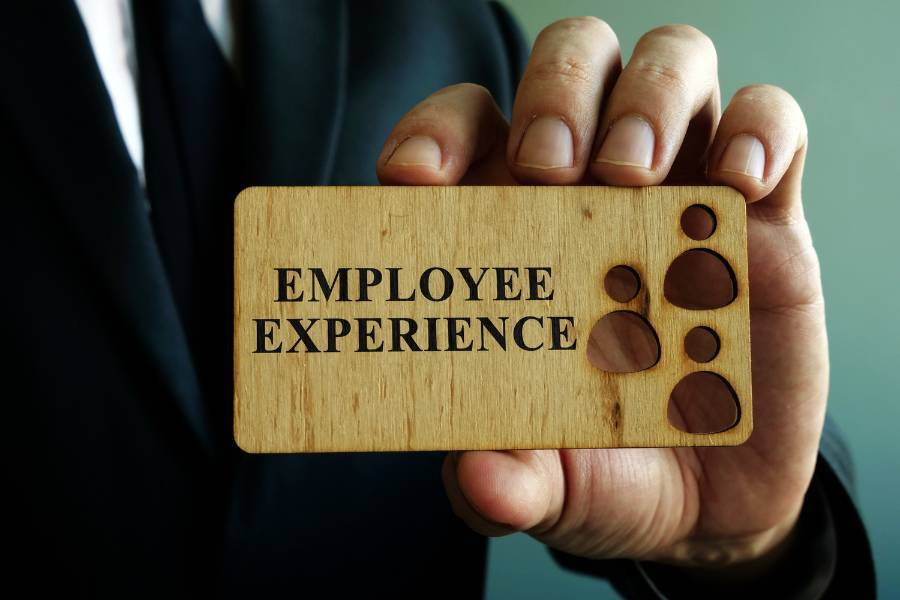When it comes to managing employees, it’s not always happy stories with inspiring and positive outcomes. Some tales show the dark side of recruitment, policy enforcement, and workplace conflicts that would make anybody cringe, feel frightened of handling people, or even laugh out loud.
For this article, I asked HR professionals and business leaders to share HR horror stories they experienced. Below are some of the tales I collected, including tips to help you avoid encountering similar incidents at the workplace.
Recruiting Nightmares
1.) “In our early growth phase, we hired a manager with an impressive resume and extensive experience in finance. We thought they were a perfect fit, but things took a turn shortly after they joined. This manager ignored our open feedback culture, dismissed input from team members, and made unilateral decisions without consulting anyone.
At first, we assumed it was just part of the onboarding process. However, it wasn’t long before we noticed our most valuable team members leaving individually. A toxic work environment can creep in like a ghost, and it took us a while to realize the extent of the damage. Morale was at an all-time low, and the team felt utterly disempowered. It was a nightmare trying to rebuild the trust we had lost.
This experience taught us a crucial lesson: hiring for cultural fit and empathy is just as important as hiring for skills. Now, we have a more thorough interview process that includes behavioral assessments to ensure new managers align with our company values.”
– From Jeffrey Zhou, CEO and Founder of Fig Loans
2.) “Early in my consulting career, I worked with a client who experienced an HR horror that’s still etched in my mind. They hired a manager who, within months, had almost single-handedly dismantled the team’s trust. The manager would belittle employees in meetings and was a master at passing the blame. What’s worse, HR didn’t act until it was too late.
It taught me that HR is the frontline defense in protecting a company’s culture, and quick action is crucial. Now, I always advise my clients to take employee feedback seriously—it can save the team from heartache.”
– From Nora Sudduth, the Founder and owner of Nora Sudduth Consulting
(Source: Giphy; Parks and Recreation © NBC)
3.) “I hired a technician who seemed like the perfect fit on paper—great experience, solid references—but things went downhill fast once he started working.
The issue wasn’t his skill level, it was his attitude. He refused to follow basic procedures we had in place for safety and customer interactions. One time, he skipped confirming that a job was completed to the customer’s satisfaction, which led to a huge problem when the customer called back, frustrated that their lock wasn’t working properly. This hurt our relationship with that client and affected team morale because others had to step in and clean up the mess.
What made it worse was that I had a gut feeling early on that he wasn’t a good cultural fit. I ignored it, thinking his technical skills would balance things out, but it was a lesson learned. We had to let him go after multiple incidents, and now we’re much more careful about ensuring new hires align with our values and our approach to customer service, not just their skillset.”
– From Eli Itzhaki, the CEO and Founder of Keyzoo
Key Takeaways: While conducting a skills-based hiring approach is important, assessing whether or not applicants can easily adjust to the company’s workplace culture is also vital. A clear hiring process that utilizes employee assessment tools can help, allowing you to identify individual strengths and gauge cultural and values fit.
Note that evaluating for culture and values fit continues even after the recruitment process. You can do this by scheduling frequent check-ins during the new hires’ first 30 and 90 days and beyond their first year. For your new hires who handle teams, you should also conduct check-ins with their staff to get feedback on their people management skills. In addition to assessing if they have adapted to your company culture, these check-ins enable you to identify development opportunities and areas where they may need additional support.
A Creepy Candidate Story
4.) “A candidate I thought was simply eager and excitable turned out to be a creepy stalker. The video call was going well until their effort for small talk started getting too personal. They mentioned specific information about my personal life, such as congratulating me on a recent marathon I did and a family member’s birthday trip, which I only ever divulged on my personal social media accounts.
True enough, when I checked my filtered messages on these platforms after the call, I found that the candidate had been spamming me with messages. Initially, messages were about following up about their application, but it started getting weird when they’d asked personal questions about my posts, such as where I like to get my coffee, which gym I go to, or which park I frequent for my morning jogs.”
– From Gary Hemming, Owner & Finance Director at ABC Finance
(Source: Tenor; Monsters, Inc. © The Walt Disney Company)
The Horrors of New Systems & Workplaces
5.) “A few years ago, we decided to implement a new productivity tracking system to improve efficiency. We rolled out sophisticated software that monitored task completion times and provided real-time feedback. At first, it seemed like a great move—our numbers showed an immediate uptick in productivity. However, what we didn’t anticipate was the effect it had on our workplace culture. It turned into a surveillance nightmare, as employees felt micromanaged and distrusted.
The team’s morale plummeted. People stopped taking small breaks, fearing they would be penalized for ‘wasting time.’ Creativity and collaboration took a hit as employees became more focused on meeting the system’s metrics rather than delivering quality work. To make matters worse, the added pressure led to burnout, and we started noticing an increase in sick leaves and resignations.
Realizing the gravity of the situation, we decided to dismantle the system and involve our employees in developing a more balanced performance evaluation method. Now, we focus on trust and open communication instead of rigid monitoring. This experience taught us that productivity tools should support your team, not stifle their motivation.”
– From Gavin Yi, Founder and CEO of Yijin Hardware
6.) “We upgraded our office environment a few years ago by transitioning to an open-floor layout. The idea was to foster collaboration and creativity among the different departments. Unfortunately, what we didn’t anticipate was the fallout it would cause. It turned into a nightmare of distractions, with constant noise, interruptions, and a total lack of privacy.

(Source: Adobe Stock)
The marketing and customer service teams, who frequently needed to focus on calls and detailed work, were hit the hardest. Productivity tanked, and tempers flared as people struggled to adapt. We received numerous complaints about the inability to concentrate, increased stress levels, and even people needing more sick days. Some employees resumed wearing noise-canceling headphones all day, making communication even more challenging.
Realizing our mistake, we scrambled to address the chaos. We eventually created quiet zones and introduced flexible remote work options. This experience taught us a harsh lesson: HR decisions about office layouts and working conditions can have a far-reaching impact on employee well-being and performance. Now, we always involve our team in decisions that affect their work environment to avoid another similar disaster.”
– From Sergey Taver, Marketing Manager at Precision Watches
7.) “My story dates back to my early career days. We had rolled out a new, technically complex HR system intended to streamline our operations. However, the task became a nightmare when, to our horror, we realized we had overlooked providing comprehensive training to the staff. The result was confusion and dreadful miscommunication that made a simple task an ordeal. It’s reminiscent of a phantom cubicle, where you can’t understand what or where you’re supposed to be.
Fast forward to my tenure at Pretty Moment, we implemented a wellness program without ensuring adequate understanding among the managers. This resulted in them becoming distressed ‘zombies,’ unaware of its benefits or its implementation. Eventually, we overcame this ‘undead’ situation through open communication, training sessions, and one-on-one discussions.
The haunting lesson was the importance of clear communication and understanding, which, when ignored, can turn any innovation into a horror story. These eerie experiences have made me more cautious and proactive in preparing everyone for new initiatives, ensuring that no one feels left in the dark—a true tale of triumph over the ghosts of miscommunication!”
– From Anna Williams, Human Resources Director at Pretty Moment
Key Takeaways: Introducing changes to the workplace can be challenging. Whether you’re adjusting office layouts or introducing new programs and systems like benefits plans and productivity tools, you must create a change management plan to help employees deal with the changes.
The key to a good plan is communication—you should hold frequent staff meetings or one-on-one discussions to gather employee feedback both before and after the change. You can also run staff surveys to get a quick pulse on how workers feel about the changes. If you’re looking for options, check out our list of the best employee survey tools.
Further, don’t forget to schedule user training sessions if you’re implementing or upgrading business software. This will help employees adjust to the new system and prevent issues, such as team members feeling frustrated with the new tool because they don’t know how to use it correctly.
Horrendous Policy Mishaps
8.) “We introduced an unlimited PTO policy a few years back, thinking it would empower our team and promote work-life balance. But what unfolded was utter chaos. Some employees hesitated to take time off because they feared it would make them look less committed, while others took full advantage, disappearing for extended periods without notice.
It quickly became a source of resentment among team members. It was chaos—like trying to herd cats, we soon realized. Our well-intentioned policy harmed team morale. We had to step back, clarify guidelines, and emphasize that rest is essential but needs to be planned and communicated.
The whole situation taught us that even with the best intentions, policies need structure. We now have a more balanced PTO policy, clear expectations, and an open dialogue about taking time off.”
– From Adam Tishman, Co-Founder of Helix Sleep
9.) “We had a team member who just couldn’t meet deadlines, and instead of having an open conversation, management decided to slap on a strict policy about attendance. Talk about a mood killer! It backfired big time, creating an atmosphere where everyone was on edge.
Realizing this wasn’t the way to go, I took a different approach. I invited my team for coffee chats, asking them about their challenges. It turned out they needed more support and resources, not restrictions. Once we started talking, everything shifted for the better.
At the end of the day, good HR is like finding the perfect fairy lights—too bright, and it feels like a spotlight; just right, and it creates that warm, inviting glow.”
– From Matt Little, Founder and Managing Director of Festoon House
10.) “A while back, we implemented a new performance bonus structure designed to reward top performers in our sales team. The intention was to motivate and recognize high achievers. However, we didn’t foresee the unintended competitive tension it would create among the team. It turned into a cutthroat environment, where employees prioritized personal sales targets over teamwork and customer care.
Collaboration broke down as everyone became hyper-focused on hitting their individual goals. Employees stopped sharing leads, and some even resorted to undermining their colleagues’ efforts to secure a better bonus for themselves. It wasn’t long before the customer experience suffered, and the team’s morale hit rock bottom. We started losing clients due to inconsistent service and had to deal with a wave of internal conflicts and resignations.
We eventually restructured the bonus system to include team-based incentives and opened a dialogue with our staff to understand their concerns. Now, our focus is on fostering a collaborative, supportive work environment that values team success just as much as individual achievements.”
– From Shawn Plummer, CEO of The Annuity Expert
11.) “One of the more memorable—and honestly, shocking—episodes was with an employee who, without any prior warning, decided to bring her dog to work. Now, don’t get me wrong, we’re a pretty flexible team, and I understand how much people love their pets.

(Source: Adobe Stock)
But this wasn’t some small, quiet dog. This was a large, overly energetic one that immediately caused chaos. We had tools, wiring, and delicate equipment all over the site, and this dog ran right through it, knocking things over and nearly causing an accident. The employee didn’t see any issue with this and acted like it was completely normal.
I had to sit down with her to explain how dangerous this was, especially in a workplace like ours, where safety is the top priority. She seemed surprised that it was even a problem. To make things worse, she argued that no one had ever told her it wasn’t allowed. I reminded her of our safety protocols, and we quickly implemented an official ‘no pets on-site’ policy to avoid any similar incidents in the future.
What made it even more frustrating was how the situation could have easily been avoided if we had been more explicit in our onboarding process about site-specific rules. This incident taught me that you can’t assume people will use common sense in every situation. We now make sure our safety protocols cover even the unexpected and clarify all workplace expectations upfront. It was an absurd situation, but it left a lasting impact on how we handle policies moving forward.”
– From Daniel Vasilevski, Director & Owner of Bright Force Electrical
(Source: Tenor; Scooby-Doo, Where Are You? © Hanna-Barbera)
Monstrous Behaviors & Work Conflicts
12.) “A while back, we had a high-performing salesperson who seemed irreplaceable in terms of revenue generation. However, their behavior became increasingly toxic. They dismissed others’ ideas, took credit for team efforts, and publicly criticized colleagues. It was like dealing with a ticking time bomb, but we didn’t act quickly because we were so focused on their sales numbers.
Eventually, complaints poured in, and we realized the damage being done to the team’s morale. By the time we intervened, it was too late. Our workplace culture had deteriorated, and several valuable employees had already left. We had to make the difficult decision to let this person go, despite their impressive sales figures.
This nightmare taught us a crucial lesson: success isn’t just about numbers—it’s about the team’s overall health. Now, we address behavioral issues early and emphasize that our culture of mutual respect and collaboration comes first.”
– From Roman Zrazhevskiy, Founder & CEO of MIRA Safety
13.) “We had two talented employees in different departments who were in constant disagreement over project timelines and resource allocation. Initially, we believed this was just healthy debate, but it escalated into something much worse. It was like a slow-burning fire, spreading tension and negativity throughout the team.
Despite our efforts to mediate, the conflict started to impact productivity, and other team members were drawn into the drama. People began taking sides, and the workplace became increasingly divided. The breaking point came when one of the employees left a heated confrontation in tears. We realized we had underestimated the situation and failed to act sooner to diffuse it.
After this experience, we revamped our conflict resolution process. We now have clearer guidelines and a dedicated HR member trained in conflict mediation to address issues early on. This nightmare taught us that no matter how talented your team is, unresolved conflicts can wreak havoc on your company culture if not managed properly.”
– From Rain Yang, and I’m the Founder & CEO of WoodenAve
14.) “Over my 12 years of experience in the field, there are a couple of stories that stand out. In one instance, a manager completely disregarded our meticulously crafted talent management program, electing to micromanage his subordinates instead. This not only jeopardized team morale, but also resulted in a significant loss of productivity. In another instance, a comprehensive communication strategy we planned to improve employee engagement ironically resulted in misinformation and rumors circling the office due to a leak before official correspondence. It took us weeks to restore trust within the organization.
However, these ‘horrors’ have significantly shaped my approach as an HR professional, making me more resilient and strategic in my planning and employee relations. They could serve as lessons for other HR professionals to avoid such pitfalls and implement more effective practices.”
– From Linda Moore, Head of HR at Slipintosoft
15.) “I caught an employee trying to cheat their Hubstaff productivity. Our company recently mandated the implementation of a time-tracking tool for remote employees. This transition was met with resistance by some managers whose team members voiced out that it was unnecessary. Nevertheless, the policy was officially implemented just this month after being tested and refined for a few months.
This employee’s productivity was always at 100%, compared to everyone else’s at around 50–70%. Yet, somehow, this data didn’t translate to their output, so I had to talk to the employee. The employee claimed that ‘maybe they were just doing too much’ compared to the rest of the team. Upon taking a closer look, I saw that the employee’s screen was on the same page for long periods of time without moving, meaning they were just clicking or moving the mouse around to fake productivity on Hubstaff. On a few occasions, the screen showed a blank Google Document moving up and down.
The worst part was that the employee profusely denied it. Apparently, they didn’t know that HR can view their work screens. So, it made for a very awkward rest of our conversation when I confronted them with proof of what they did.”
– From Jarret Austin, CEO of Bankruptcy Canada
Key Takeaways: Managing employees is never easy. It requires motivating your team to do their jobs efficiently while managing their expectations and providing support when they need it. You also have to keep an eye out for unprofessional behaviors at work and help resolve employee-related issues and conflicts before they become big problems that can negatively impact company operations, staff engagement, and worker productivity.
To ensure that you and your people managers have the skills needed to handle workers, enroll in leadership training programs to improve problem-solving, communication, critical thinking, and decision-making skills. These will help you and your team to think strategically and know how to effectively manage conflicts in the workplace.
Cringey Announcements & Emails
16.) “I once witnessed a scenario where performance reviews, meant to be private, were mistakenly sent to the entire company, causing a massive breach of trust. Employees were understandably upset, and the incident impacted morale.
In an effort to stop such mistakes from happening again, we implemented secure HR platforms for internal communications, which allowed controlled access to sensitive information. We also rolled out mandatory training to ensure the team understood the importance of confidentiality and double-checking recipients before sending any sensitive data. These actions significantly lowered the chances of confidential information being accidentally exposed, helping to restore trust in HR processes. Employees felt reassured knowing that private matters were being handled with greater care and security.”
– From Jonathan Feniak, General Counsel at LLC Attorney

(Source: Adobe Stock)
17.) “It was like a bombshell when an employee posted their resignation letter online, exposing unresolved workplace issues and causing a PR nightmare. The open letter quickly gained attention, severely damaging our brand reputation.
We established a transparent internal grievance procedure where employees were heard and knew their concerns would be treated with professionalism and confidentiality in order to prevent such occurrences in the future. To identify possible issues early and make sure staff members felt supported, regular one-on-one sessions were also implemented.
This change decreased the likelihood of public resignations while also improving the work environment. We were able to preserve internal trust and preserve the company’s reputation by confronting problems head-on.”
– From Brooke Webber, Head of Marketing at Ninja Patches
Key Takeaways: Of the two HR nightmare stories in this section, the first one could be prevented by using a performance review system with permission controls that allow you to limit user access to reports and evaluation forms. If you’re looking for suitable options, read our guide to the best performance management software. Even if you have a system in place, constantly reminding employees to always check their emails before clicking the send button can prevent messages from reaching unintended recipients.
As for the second story, following Webber’s tips will help you avoid having a similar experience with a disgruntled worker. What can also help is creating a positive workplace culture that promotes open communication between employees.
Case of the Clueless HR
18.) “HR ignored ongoing bullying issues at one department until the turnover rate skyrocketed and people started leaving in droves. In response, we developed a zero-tolerance bullying policy that was not only clear, but enforceable with specific steps for handling complaints. We conducted company-wide training to make sure everyone understood what constituted bullying and the consequences of such behavior.
To back this up, we introduced an anonymous reporting mechanism and committed to acting swiftly on all reports with thorough investigations. Managers were trained to recognize signs of bullying early and were required to take immediate action to protect their teams. This proactive stance restored trust in HR and helped retain talent, as employees felt supported and knew that bullying would be addressed seriously. The zero-tolerance policy became a core part of our workplace culture, ensuring a respectful environment.”
– From Michael Nemeroff, CEO of Rush Order Tees
Bonus Horror Story
If you’re looking for a workplace story that may or may not involve a ghost, here’s a scary one. A word of caution though, this might change your mind about working late at night and/or staying alone at the office.
19.) “A few years ago, I was working late with an HR manager to finalize some contractor paperwork. The office was quiet—everyone had gone home, and it was just the two of us finishing up.
As we were going over the files, I heard footsteps down the hallway. It was strange because I knew no one else was there. I glanced at the HR manager, and she gave me the same puzzled look, but we brushed it off and kept working. A few minutes later, the footsteps came again, but this time they were closer, like someone was walking just outside the door. I got up to check, but no one was there.
Then, as we were getting back to the paperwork, a stack of forms that had been sitting neatly on the desk just slid off, landing in a scattered mess on the floor. We both froze. The HR manager, usually calm and collected, looked shaken. ‘I didn’t touch that,’ she said quietly.
We wrapped things up pretty quickly after that. Even though we didn’t talk about it much, the weirdness of that night stuck with me—sometimes, it feels like the office itself has a life of its own.”
– From Michael Benoit, Founder of California Contractor Bond & Insurance Services and President of Pacific United Insurance Services
(Source: Tenor; Spongebob Squarepants © Nickelodeon)
I always knew that the workplace can be terrifying and you can encounter HR horror stories that will test your patience and skills, exposing you to situations that may be more challenging than entering a haunted house. While these human resource stories might have given you the chills—or even made you laugh—it shows the importance of creating a positive and supportive work culture to keep employees motivated, engaged, and productive.
But if your HR challenges are similar to the last story on this list, I recommend moving offices. You may also want to consider turning your workforce into a fully remote team, provided your business doesn’t require on-site work.


